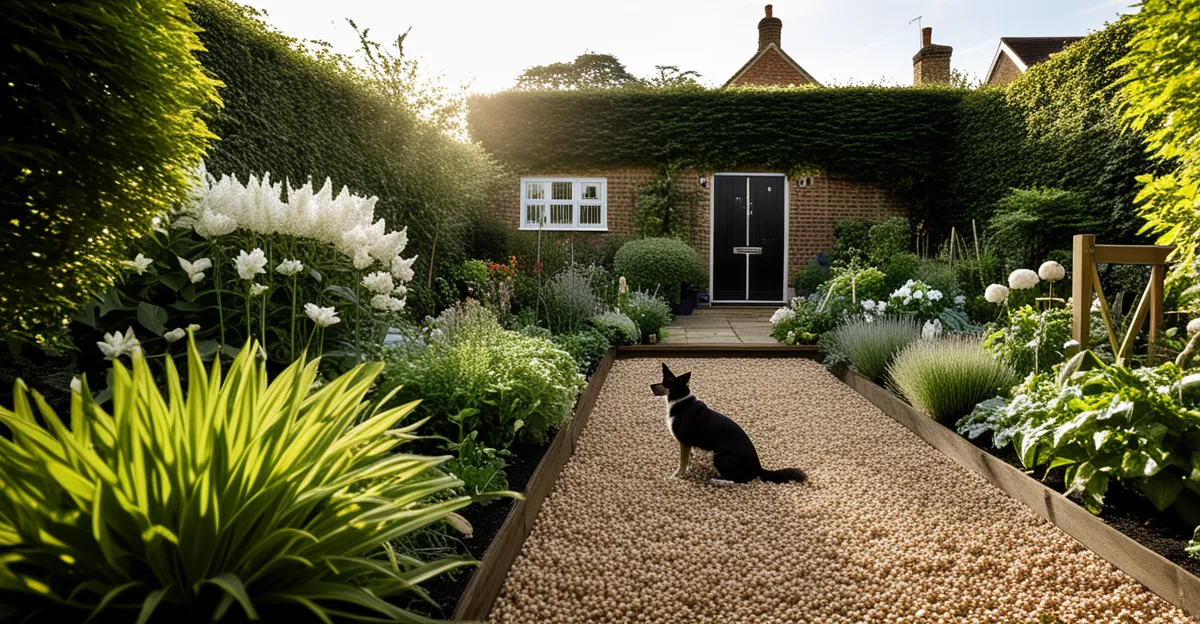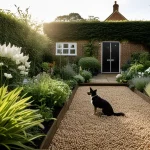Essential Steps to Plan Your Pet-friendly Garden in the UK
Planning a pet-friendly garden in the UK starts with a thorough understanding of your garden space and your pet’s specific needs. Begin by assessing how much room you have available and what kind of activities your pet enjoys. Dogs that love to run require larger open spaces, while cats may prefer climbing structures and hiding spots. Tailoring your garden design for pets ensures their safety and happiness.
Next, researching the local UK climate and soil conditions is crucial. The UK’s varied climate, often wet and temperate, affects plant choices and overall garden health. Knowing your soil type will help inform which plants will thrive while remaining safe for your pets. This aligns with UK gardening tips that recommend selecting resilient plant species suited to your regional weather patterns.
Also to see : How Can You Choose the Perfect Pet for Your Home in the UK?
Also, consider your pet’s behaviour and habits when planning. For instance, dogs that dig frequently may need reinforced groundcover or designated digging zones, while curious animals might require secure boundaries. Understanding these habits early aids in creating a garden that balances both aesthetic appeal and practicality.
Careful pet-friendly garden planning in the UK involves blending your garden’s physical attributes with your pets’ preferences and safety requirements. This comprehensive approach leads to a thriving outdoor space where both plants and pets coexist harmoniously.
Topic to read : What Are the Common Behavioral Traits in UK Pets?
Choosing Safe Plants and Materials for Pets
Selecting pet-safe plants for your UK garden is vital to protect your furry friends from accidental poisoning or discomfort. Many common garden plants can be toxic to cats and dogs. For example, foxglove, rhododendron, and lily of the valley are often found in UK gardens but should be avoided due to their harmful effects if ingested. In contrast, herbs like basil, thyme, and rosemary not only thrive in the UK climate but are also non-toxic and can enhance your garden’s aroma and appeal.
When planning your garden design for pets, consider the materials used throughout. Some mulches contain cocoa shells or other substances toxic to pets, so opt for pet-friendly mulches like wood chips, straw, or gravel that reduce the risk of ingestion hazards. Regarding fencing, sturdy and secure boundaries made from safe materials help keep pets contained without sharp edges or toxic paints. Pathways should be constructed from non-toxic, non-slip surfaces to prevent injuries, especially for active dogs.
Understanding which plants to avoid and choosing appropriate garden materials ensures your pet-friendly garden planning promotes safety and enjoyment. In the UK, selecting the right combination of pet-safe plants, mulches, and secure fencing supports a harmonious and hazard-free environment tailored to your pets’ wellbeing.
Preparing and Pet-proofing Your Garden Space
Proper garden preparation is essential for a safe and enjoyable pet-friendly garden. Start by testing and improving your soil to support healthy plant growth while ensuring it is free from harmful substances like pesticides or fertilizers that could harm your pets. In the UK, soil often requires aeration or organic amendments to enhance drainage, which benefits both plants and pets by preventing waterlogged areas that can cause discomfort or health issues.
Pet-proofing methods involve creating a secure environment tailored to your pet’s behaviour. Installing durable, secure garden fencing is crucial to keep pets safely contained. Opt for materials resilient to weather and pet wear, such as treated wood or metal panels, avoiding sharp edges or gaps pets could exploit. Height and design should consider your pet’s ability to jump or climb, ensuring boundaries are escape-proof.
Designate specific zones within your garden for play and relief to protect sensitive planting areas and reduce mess. Incorporating surfaces like gravel or artificial turf in these areas can help maintain cleanliness and durability. Additionally, consider installing barriers or raised beds around delicate plants to thwart curious digging or chewing behaviours common in dogs and cats.
Combining thorough soil preparation with thoughtful pet-proofing techniques establishes a garden that supports both thriving plants and your pets’ safety and happiness throughout the seasons.
Gardening Tips for UK Pet Owners
Gardening successfully in the UK while accommodating pets requires adapting your garden to the country’s changing weather. The UK’s climate is known for its variability, with frequent rain and cool temperatures affecting plant health and soil conditions. To ensure a thriving pet-friendly garden year-round, focus on weather resilience by selecting plants that tolerate dampness and fluctuating temperatures, such as native species like heather, bluebells, or ferns that naturally thrive in UK gardens.
Sustainable and pet-friendly gardening techniques include avoiding chemical pesticides and fertilizers that can harm pets, instead opting for organic compost and natural pest deterrents. Mulching with pet-safe materials, like wood chips or straw, not only supports soil moisture retention but also creates a safe environment for pets to explore.
Incorporate UK gardening tips that emphasize native or climate-resilient plants, which often require less maintenance and fewer resources. These plants, when combined with thoughtful garden design for pets, can create a durable outdoor space that benefits both flora and fauna. Durable planting and sustainable practices reduce the need for garden interventions, which means fewer disturbances and hazards for your pets.
By embracing UK-specific gardening strategies that prioritize weather adaptability and sustainability, you create a balanced environment. Such planning ensures your pet-friendly garden remains both beautiful and safe despite the often unpredictable UK climate.











